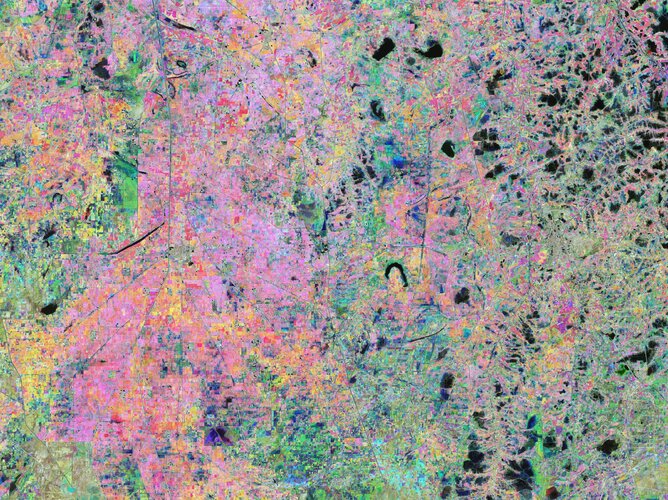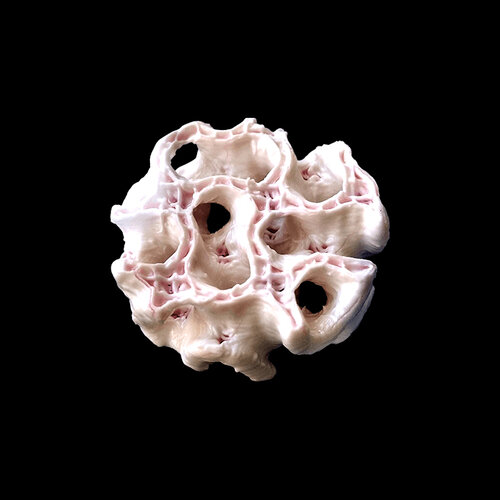
Copernical Team
Ride into orbit secured for Sentinel-1C

A contract signed with Arianespace secures the launch for the third Copernicus Sentinel-1 satellite. Scheduled to lift off on ESA’s new Vega-C rocket from Europe’s Spaceport in French Guiana in the first half of 2023, Sentinel-1C will continue the critical task of delivering key radar imagery for a wide range of services, applications and science – all of which benefit society.
Watch live: media Q&A with Samantha Cristoforetti

Tune in this Monday 11 April from 15:00-16:30 CEST (13:00-14:30 GMT) for a conversation between ESA astronaut Samantha Cristoforetti and media in Europe live on ESA Web TV.
First private mission launches for International Space Station
 The first fully private mission to the International Space Station blasted off from Florida Friday with a four-member crew from startup company Axiom Space.
The partnership has been hailed by NASA, which sees it as a key step in its goal to commercialize the region of space known as "Low Earth Orbit," leaving the agency to focus on more ambitious endeavors deeper into the cosmos.
A S
The first fully private mission to the International Space Station blasted off from Florida Friday with a four-member crew from startup company Axiom Space.
The partnership has been hailed by NASA, which sees it as a key step in its goal to commercialize the region of space known as "Low Earth Orbit," leaving the agency to focus on more ambitious endeavors deeper into the cosmos.
A S Week in images: 4-8 April 2022

Week in images: 4-8 April 2022
Discover our week through the lens
Earth from Space: Sindh, Pakistan

The Copernicus Sentinel-2 mission takes us over part of Sindh – the third-largest province of Pakistan.
NASA releases breakthrough forest biomass-carbon product
 NASA's GEDI mission has reached a major milestone with the release of its newest data product, which provides the first near-global estimate of aboveground forest biomass and the carbon it stores - filling a key gap in climate research.
The data enables research into how Earth's forests are changing, what role they play in mitigating climate change, and the regional and global impacts of p
NASA's GEDI mission has reached a major milestone with the release of its newest data product, which provides the first near-global estimate of aboveground forest biomass and the carbon it stores - filling a key gap in climate research.
The data enables research into how Earth's forests are changing, what role they play in mitigating climate change, and the regional and global impacts of p NASA finds new way to monitor underground water loss
 Scientists have produced a new method that holds the promise of improving groundwater management - critical to both life and agriculture in dry regions. The method sorts out how much underground water loss comes from aquifers confined in clay, which can be drained so dry that they will not recover, and how much comes from soil that's not confined in an aquifer, which can be replenished by a few
Scientists have produced a new method that holds the promise of improving groundwater management - critical to both life and agriculture in dry regions. The method sorts out how much underground water loss comes from aquifers confined in clay, which can be drained so dry that they will not recover, and how much comes from soil that's not confined in an aquifer, which can be replenished by a few Second Successful Flight for DARPA Hypersonic Air-breathing Weapon Concept (HAWC)
 DARPA and its U.S. Air Force partner recently completed a free flight test of the Lockheed Martin version of the Hypersonic Air-breathing Weapon Concept (HAWC). The vehicle, after release from a carrier aircraft, was boosted to its Aerojet Rocketdyne scramjet engine ignition envelope. From there, it quickly accelerated to and maintained cruise faster than Mach 5 (five times the speed of sound) f
DARPA and its U.S. Air Force partner recently completed a free flight test of the Lockheed Martin version of the Hypersonic Air-breathing Weapon Concept (HAWC). The vehicle, after release from a carrier aircraft, was boosted to its Aerojet Rocketdyne scramjet engine ignition envelope. From there, it quickly accelerated to and maintained cruise faster than Mach 5 (five times the speed of sound) f Space Force announces candidate locations for STARCOM HQ, Deltas
 The Department of the Air Force selected six candidate locations for U.S. Space Force's Space Training and Readiness Command Headquarters, April 4.
All USSF bases are candidate locations under consideration, which include Los Angeles Air Force Base, California (will be renamed a Space Force Base in the future), Vandenberg SFB, California, Buckley SFB, Colorado, Schriever SFB, Colorado, Pet
The Department of the Air Force selected six candidate locations for U.S. Space Force's Space Training and Readiness Command Headquarters, April 4.
All USSF bases are candidate locations under consideration, which include Los Angeles Air Force Base, California (will be renamed a Space Force Base in the future), Vandenberg SFB, California, Buckley SFB, Colorado, Schriever SFB, Colorado, Pet 
 Image:
3D-printed bone
Image:
3D-printed bone 


































